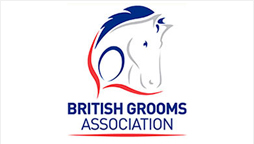Equine anti-doping
Equine prohibited substances
Treating horses pre-competition
The risk of contamination
Anti-doping violations
Persons Responsible
BEFAR
The BEFAR testing programme
If you’re a member of British Dressage, British Equestrian Vaulting, British Eventing, British Carriagedriving, British Showjumping, Endurance GB and British Reining, you have a responsibility to know, understand and follow our equine anti-doping rules.
If you're competing under international rules in the UK or abroad, you will need to refer to the FEI Clean Sport website for information before and during competition. It provides a range of information on equine anti-doping, including a short video on the equine Anti-Doping rules.
This section of the website focuses on the rules around equine anti-doping – to find out more about human anti-doping, click here.
The FEI has published a list of the changes to the Prohibited Substances list for 2026, which will come into effect on 1 January 2026.
2026 FEI PROHIBITED SUBSTANCES LIST
2025 FEI PROHIBTED SUBSTANCE LIST
Why is equine anti-doping important?
Our national equine anti-doping programme seeks to protect the welfare of horse competing in our sport. It's also intended to maintain the integrity of our sport by protecting the right of everyone to participate in fair competition on a level playing field.
Clean sport is based on the philosophy that a horse should compete on its own merits, without any unfair advantage. It's also to protect equine welfare because drugs can mask issues such as unfitness, lameness or disease.
Equine prohibited substances list
On 1 January each year, the FEI publishes an 'Equine Prohibited Substances List' (EPSL). This list applies to all horses and ponies competing in any national or international competition.
The list enables Persons Responsible (PRs) for the horse – the rider, owner, groom, parent, etc – to check that they aren't treating or feeding horses with substances that are prohibited for use during competition, and substances that are not permitted for use in the horse at any time.
The prohibited substance list is made up of two categories...
- Banned substances are substances that are deemed by the FEI to have no legitimate use in the competition horse and/or have a high potential for abuse. They’re not permitted for use in the competition horse at any time
- Controlled medications are substances that are deemed by the FEI to have therapeutic value or be commonly used in equine medicine. Controlled medications have the potential to affect performance or be a welfare risk to the horse
The most recent copy of the FEI Prohibited Substances List is available below. You can also search for substances using the FEI Prohibited Substances database.
We also recommend that you download the FEI Clean Sport app to your mobile device, which will allow you to check the Prohibited Substances database when you're on the go.
A summary of the changes for 2025 are now available to view.
2025 FEI EQUINE PROHIBITED SUBSTANCES LIST CHANGES
FEI EQUINE ANTI-DOPING AND CONTROLLED MEDICATION RULES 2025
Treating horses pre-competition
The welfare of the horse is paramount – no horse should be competing while on medication. Any medication given prior to the horse competing must not be present in the horse’s system on the day of competition.
It’s therefore important to always document any veterinary treatment and medications that your horse receives, including the dates of when the treatment starts and finishes, and know the difference between detection and withdrawal times.
- Detection time is the approximate period for which a drug (or its metabolite) remains in a horse's system and can be detected by the laboratory
- Withdrawal time is the period of time, decided by the treating vet, that it takes for the drug to leave your horse’s system – it’s likely to be based on the detection time with an added safety margin.
The FEI publish a list of detection times, which can be found in the document below. The British Horseracing Authority also has a similar list available.
However, it’s important to remember that these times can vary depending on individual differences between horses such as size, metabolism, degree of fitness, recent illness, or disease. It’s always better to allow extra time before competing to reduce the risk of your horse testing positive.
If you have any questions about detection and withdrawal times of any drugs that your horse has been prescribed, talk to your vet.
THE RISK OF CONTAMINATION
In order for horses to compete in National or FEI events, they must be free from Prohibited Substances. Check out our Clean Sport Best Practice page for a number of effective ways to minimise and mitigate the possibility of contamination.
Anti-doping Violations
Under BEFAR and FEI regulations, there are 10 types of violations that can lead to sanctions being imposed on the rider, member of their support team or other person. These include...
- Presence of a prohibited substance, or its metabolites or markers, in a horse’s sample. This means that your horse tests positive for a prohibited substance.
- Use or attempted use of a prohibited substance. This means that if you're caught using, or trying to use, something prohibited, a case may be brought against you, even if your horse’s sample is not tested or comes back negative for any prohibited substances.
- Evading, refusing or failing to submit to sample collection. If you refuse to have your horse sampled, do not present your horse for testing after notification, or you hide from the testing representatives, a case may be brought against you.
- Tampering, or attempted tampering with any part of doping control by a person pesponsible, member of the support personnel or other person. If you tamper with your horse’s bodily sample, such as trying to replace it with another horse’s sample or interfering with clean collection, then a case may be brought against you.
- Administration or attempted administration of a banned substance.
- Possession of a banned substance(s) or a banned method(s) by a person responsible or member of the support personnel. If you have banned substances in your possession at a competition, a case may be brought against you. There is no possession violation for controlled medication.
- Trafficking or attempted trafficking in any banned substance or banned method by a person responsible, member of the support personnel or other person.
- Complicity or attempted complicity by a person responsible, member of the support personnel or other person.
- Prohibited association by a person responsible.
- Acts by a person responsible, member of the support personnel or other person to discourage or retaliate against reporting to authorities.
Persons responsible
The 'Person Responsible' for the horse is normally the competitor who rides or drives the horse during an event, but the owner and other support personnel – including grooms and veterinarians – may be regarded as additional persons responsible. In vaulting, the lunger is an additional Person Responsible.
In the case of a borrowed horse, even if the owner is considered as a Person Responsible under BEFAR, this does not discharge the rider of his or her responsibility. Therefore, riding a borrowed horse necessitates the rider ensuring that they have full information on all possible treatments and medications that have been administered to the horse.
In the case of a rider, driver, or vaulter who is under the age of 18, their parent or legal guardian will be the Person Responsible on their behalf. However, the young person will still be eliminated from the relevant competition if a Prohibited Substance is found or a BEFAR rule violated.
AFTER THE TESTING PROCESS. WHAT HAPPENS NEXT?
BEFAR
BEFAR is the shorthand term used to refer to our national Equine Anti-Doping and Controlled Medication Rules. BEFAR replicates, so far as is possible, the Federation Equestre Internationale’s (FEI) equine anti-doping and controlled medication regulations (EADCMR), which in turn are based upon the World Anti-Doping Code.
Most medicines and drugs are prohibited if detected in a horse at the time of competition. This ruling is based on the FEI’s philosophy that a horse should compete on its own merits, without any unfair advantage that might follow the use of drugs. It's also to prevent horses damaging their athletic potential as a result of drugs masking unfitness, lameness or disease.
BEFAR is designed to deal with two separate issues:
- The doping of horses. The use of artificial enhancements to gain an advantage over others in competition is cheating, and is fundamentally contrary to the spirit of any sport. The presence of doping in sport not only undermines the fairness and credibility of each competitive event, but in the long term can have a serious effect on the credibility and viability of the sport in question.
- Inappropriate medication during competition. It is essential for the welfare of the horse that it is given appropriate veterinary treatment if and when required, and that this should include appropriate medication. Medication, however, may mask an underlying health problem and may adversely affect the long-term health of the horse. Horses should not compete when taking medication where such medication may have a detrimental effect on the horse’s welfare.
The BEFAR Testing Programme
BEFAR and its associated testing programme are managed and administered centrally by us on behalf of the Member Bodies. All positive cases are dealt with through the results management provisions in BEFAR, with cases being heard and determined by our Hearing Body.
British Equestrian publishes a BEFAR case status table that lists positive cases and the sanctions that have been applied for the current year or for cases where riders are currently suspended.
BEFAR Case Table November 2025
Testing process
This video shows an anti-doping test for a horse and the standards/processes with regards to the selection of horses, the sampling kit, the sampling collection procedure, the necessary documentation, sample transportation and finally the testing at FEI approved laboratories.
This process works in the same way for all competitions, including the BEFAR testing programme.


